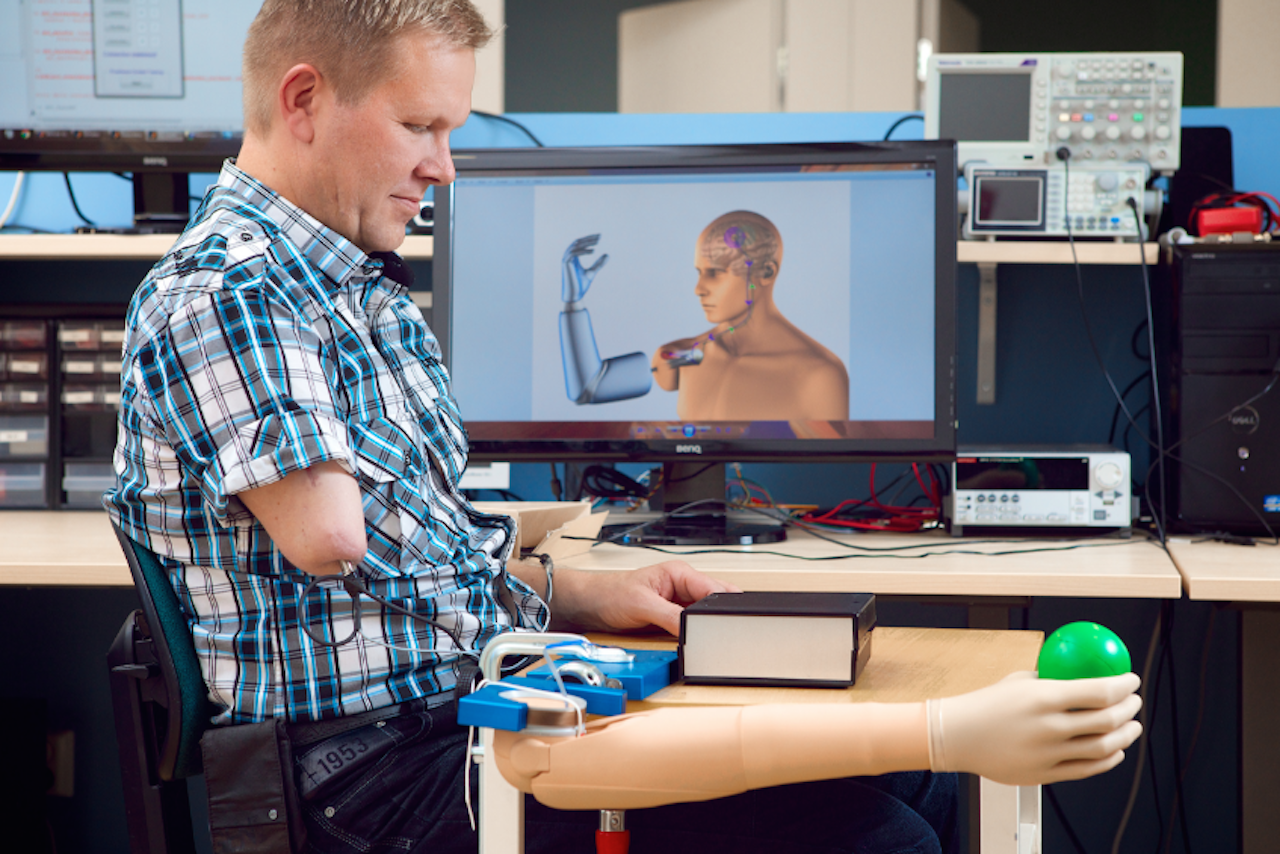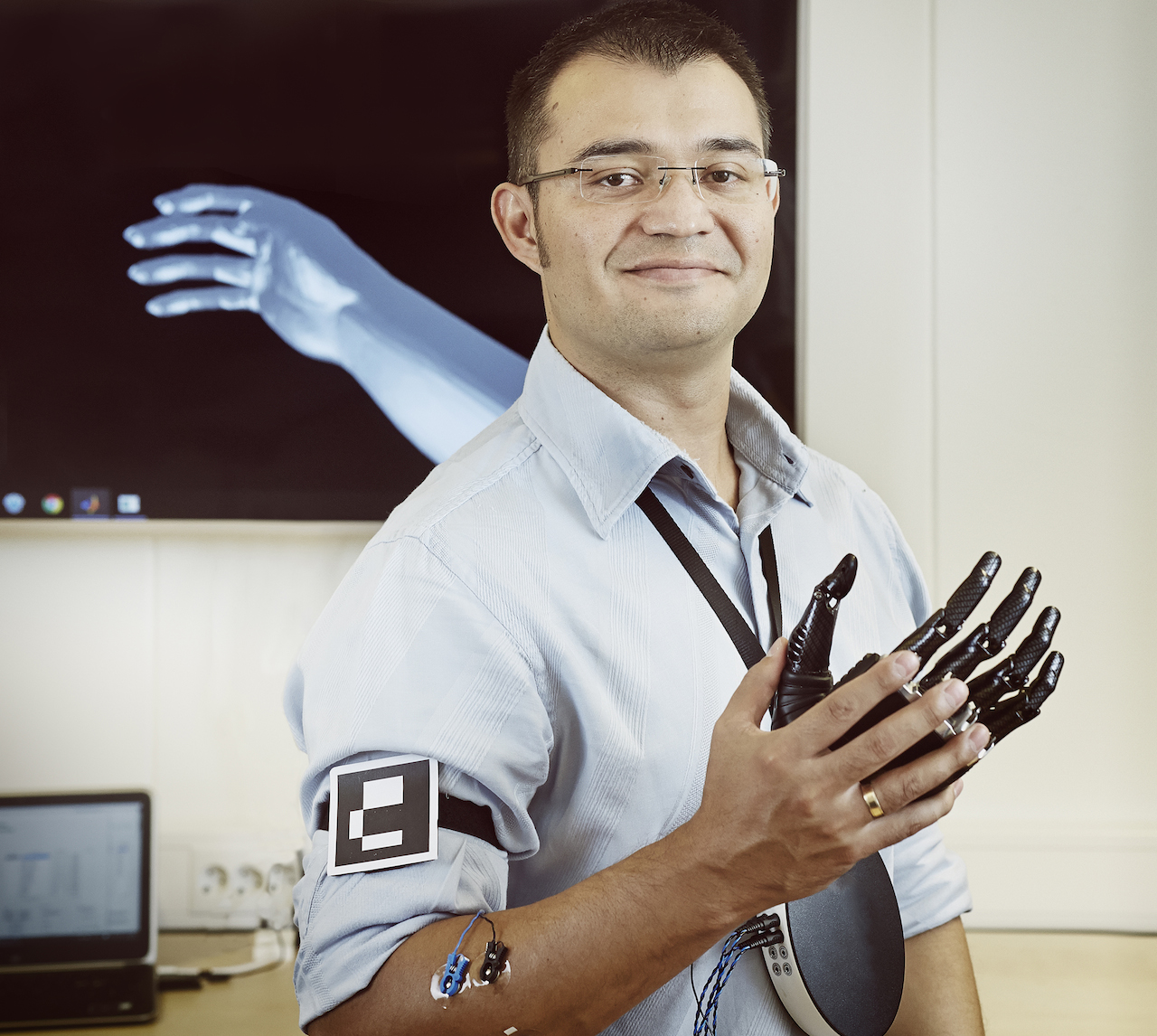Bionic Bolt: the future of performance enhancing sports robotics

Last weekend, the world's cyborgs gathered in a sports hall in Zurich, Switzerland, to put their speed, strength, skill and endurance to the test. Competing across six different disciplines, more than 400 cybernetically-augmented athletes battled it out for sporting glory in the 'Cybathlon'.
Some had prosthetic arms or legs. Some wore powered exoskeletons, and some employed brain-computer interfaces. But all were united in the goal of demonstrating to a 4,600-strong crowd (and many more watching online) just how far assistive technologies have come in recent years.
The event was the brainchild of Robert Riener, a Professor of Sensory-Motor Systems at the Swiss Federal Institute of Technology.
“We would like to raise people’s awareness of the needs of people with physical disabilities and the obstacles they face in everyday life,” he explained in an interview earlier this year.
“We believe this knowledge, in turn, can break down more barriers.”
Powered prostheses
The Cybathlon differs from competitions like the Paralympics in two main ways. Firstly, the athlete use powered prostheses, which are expressly forbidden at the Paralympics. Secondly, the Cybathlon's challenges are modelled after those experienced by people with disabilities on a daily basis - doors, stairs and ramps, for example.
To cope with those, each “pilot” - as the athletes are called - has a substantial team of engineers, developers and roboticists behind them to make sure that their implants were in perfect working order for each challenge.
Sign up for breaking news, reviews, opinion, top tech deals, and more.
One competitor, Magnus Niska, works as a lorry driver in Northern Sweden. He's had a biomechanical arm prosthesis for almost four years, which is capable of allowing him to feel varying levels of pressure.

“I don’t feel handicapped since I got this arm”, Niska told Techradar. “I can now work full time and can perform all the tasks in both my job and my family life. The prosthesis doesn’t feel like a machine, but more like my own arm.”
He took home a bronze medal in the powered arm prosthesis race, which featured tasks like opening cans, slicing bread, loading a tray with crockery and then opening a door with that tray in hand. He was unique in that he was the only competitor with an amputation above the elbow, making the achievement doubly impressive.

Max Ortiz Catalan, the researcher in charge of developing Niska's arm, says it employs cutting edge neural sensory technology. “This is a completely new research field in which we have managed to directly connect the artificial limb to the skeleton, nerves and muscles,” he explained. “In addition, we are including direct neural sensory feedback in the prosthetic arm so the patient can intuitively feel with it.”
Augmented achievement
The implants and augmentations shown off at the Cybathlon represent the pinnacle of achievement in the field of sports bionics, but are far from the only showcase of modern assistive devices. While the Paralympics doesn't permit prostheses to be powered, it still demonstrates the remarkable achievements of modern materials engineering.
For example, the running blades used by athletes at the Rio 2016 Paralympics are built up from 80 layers of carbon fibre, each one thinner than a human hair. Their custom prostheses allowed them to challenge the achievements of athletes with two legs, coming within a few seconds of their times.
Or take the wheelchairs designed by BMW for Tatyana McFadden, the world's top wheelchair racer. Custom body molds, created using 3D scanning and printing techniques, allow her to minimize aerodynamic drag, while carbon fibre is used to create a stiff, lightweight chassis. McFadden and her teammates collectively brought home seven medals, and set four Paralympic records.
Or how about the impressive equipment used by para-alpine skiiers, including some where the athlete sits on a chair mounted on top of a ski? Originally designed as far back as 1967, today “sitskis” are made of modern materials like aluminium, kevlar and carbon fibre, with the resulting lighter weight allowing disabled skiers to tackle steeper slopes and even moguls.
Already, arguments have begun about whether these kinds of technologies offer an unfair advantage. While it's important to emphasise that there's always an accomplished athlete in control of the technology, and that just buying a set of running blades doesn't guarantee record-breaking times, it's hard to deny that new technologies may soon soon allow competitors with prostheses to exceed the capabilities of those without. Where do you draw the line between “necessary for performance” and “performance enhancing”?
A new sporting era
“In terms of Paralympic sports, we're still in this void, in this vacuum,” said Brendan Burkett, a member of the International Paralympic Committee's Sports Science Committee at a conference in 2013.
“A lot more explanation and research still has to be done. But we still need to keep the essence of the sport. We need to keep that while also improving the functionality of the sport. We don't want the sports to be inhibited by robots, though. We want them to always be controlled by the humans.”
Burkett's goal of preventing an invasion of robots stands somewhat at odds with Robert Reiner's more practical goals for the Cybathlon.

“Besides overcoming reservations about the field, we want to motivate developers to create technologies that provide real support to people in daily life,” he said. “We hope Cybathlon's competitive nature will boost the development of powered assistive technology in the long term.”
Ultimately, these innovations in sport lead directly to real improvements in the lives of people with disabilities. The improved control systems for powered wheelchairs tested at the Cybathlon will eventually make their way into the commercial models available for sale. The brain computer interfaces shown off in Zurich will eventually allow quadriplegics to control many more different kinds of devices than they're able to today.
“People with a physical disability that restricts daily life – these are the real winners of the Cybathlon,“ said Reiner in an interview at the close of the event.
“And as we have seen today, great things can be achieved when their needs directly influence the development of new assistive technology.”
